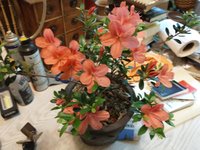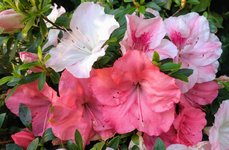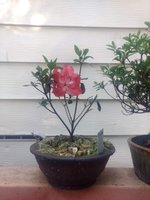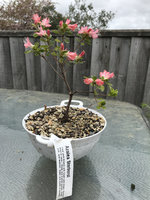Deep Sea Diver
Imperial Masterpiece
As always, the answer in bonsai and it seems in azaleas too... is it depends.... shoot selection, horticulture and cultivar at least in this case.Interesting.....so it will take several years for the blossoms to mature to produce the patterns. I wish Mark still had access to the site to hear what he had to say.
Mark and I have both corresponded with Jim. we are all members of the ASA. I’ve forwarded the note to Mark already. This appears to merely confirm what we have been discussing over the years...
cheers
DSD sends















